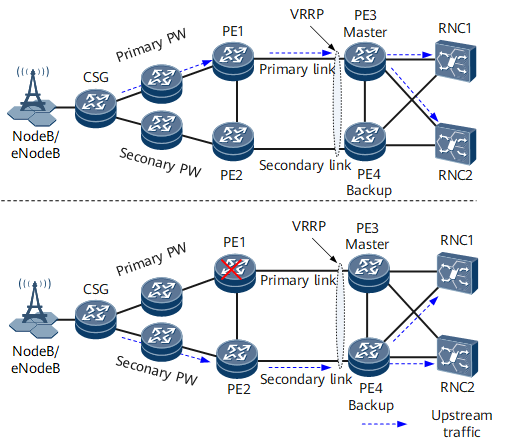Traffic Forwarding by a Backup Device
Principles
As shown in Figure 1, the base station attached to the cell site gateway (CSG) on a mobile bearer network accesses aggregation nodes PE1 and PE2 over primary and secondary pseudo wires (PWs) and accesses PE3 and PE4 over primary and secondary links. PE3 and PE4 are configured to belong to a Virtual Router Redundancy Protocol (VRRP) group. If PE1 fails, traffic switches from the primary link to the secondary link. Before a master/backup VRRP switchover is complete, service traffic is temporarily interrupted.
To meet carrier-class reliability requirements, configure devices in the VRRP group to forward traffic even when they are in the Backup state. This configuration can prevent traffic interruptions in the preceding scenario.
Implementation
As shown in Figure 1, upstream traffic travels along the path CSG -> PE1 -> PE3 -> RNC1/RNC2 in normal circumstances. PE3 is in the Master state, and PE4 in the Backup state.
- If PE4 cannot forward traffic, service traffic is temporarily interrupted before the master/backup VRRP switchover is complete.
- If PE4 can forward traffic, PE4 takes over service traffic forwarding even if the master/backup VRRP switchover is not complete.
Benefits
Traffic forwarding by a backup device improves master/backup VRRP switchover performance and reduces the service interruption time.
